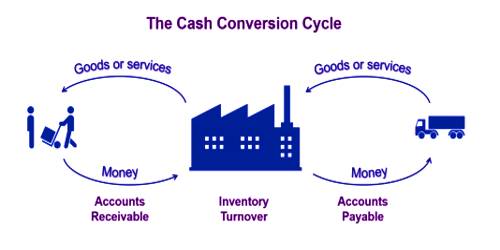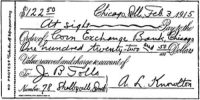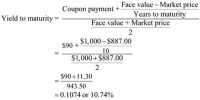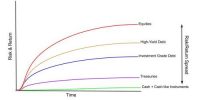The cash conversion cycle is one of several measures of management effectiveness. It measures how fast a company can convert cash on hand into even more cash on hand. It is a metric that shows the amount of time it takes a company to convert its investments in inventory to cash. The Cash conversion cycle does this by following the cash as it is first converted into inventory and accounts payable, through sales and accounts receivable, and then back into cash. Generally, the lower this number is better for the company. Although it should be combined with other metrics, it can be especially useful for comparing close competitors, because the company with the lowest Cash conversion cycle is often the one with better management
Cash conversion cycle = inventory conversion period receivables collection period – payables deferral period.
Calculating cash conversion cycle – The cash conversion cycle calculation uses elements of the operation cycle equation including raw materials, work in process, finished goods and bills receivable, in addition to the day’s payables outstanding. The day’s payables outstanding are the average time required by the company to pay its vendors. First, calculate the accounts payable turnover by dividing the cost of goods sold by accounts payable. Next divided 365 days by the accounts payable turnover to determine the day’s payables outstanding. To determine the cash conversion cycle, first, add the days “sales outstanding and the days” sales in inventory, and then subtract the days payable understanding. The resulting cash conversion cycle measures the time period between the cash outflow for materials required for the production of a product or service and the cash inflow from sales. A decrease in cash conversion can lead to an increase in the operating profit margin. The cash conversion cycle involves determining how long it takes to create inventory, sell inventory and collect on invoices to customers.
















